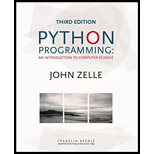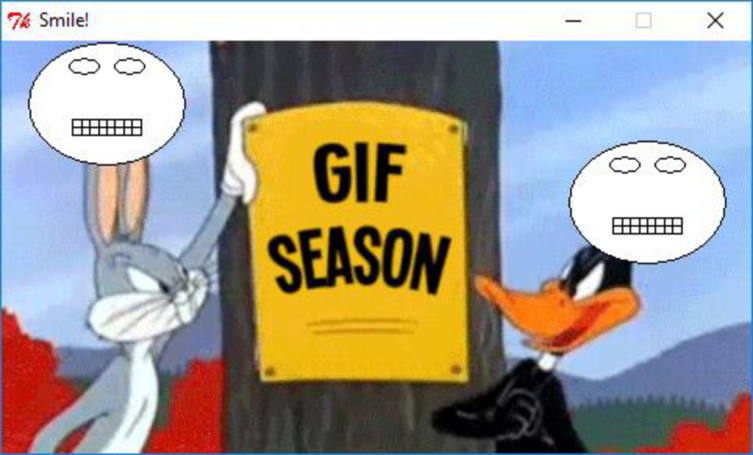
Draw a face
Program plan:
- Import the header file.
- Define the “drawFace” method
- Get the “x” and “y” positions
- Get the “p1” and “p2” positions
- Call the “Oval” method for drawing the face
- Set the color to the face
- Draw the face
- Get the “lc” and “rc” position
- Call the “Circle” method
- Set the color to the face
- Call the “draw” method
- Call the “Circle” method
- Set the color to the face
- Call the “draw” method
- Get the “m1”, “m2”, and “m3” values
- Call the “Rectangle” method
- Set the color to the face
- Call the “draw” method
- Call the “Line” method
- Get the center position
- Get the “x” and “y” position
- Call the “Point” method
- Call the “Line” method
- Call the “draw” method
- Get the “x” and “y” position for different variables
- Calculate “t” and “t1” value
- Call the “Rectangle” method
- Call the “draw” method
- Iterate “i” until it reaches 7
- Clone the teeth by calling “clone” method
- Move the face by calling “move” method
- Call the “draw” method
- Define the main method.
- Read the filename from the user
- Get the image width and height from the file
- Set the graph win size
- Set the coords for graph
- Draw the face
- Get the number of faces from the user
- Iterate “i” until it reaches “n” value
- Get the mouse action
- Call the “drawFace” method
- Call the function “main()”.
This Python program is used to get the GIF (Graphic Interchange format) file and draw the smileys when the user clicking the GIF image.
Explanation of Solution
Program:
#import the header file
from graphics import *
#definition of "drawFace" method
def drawFace(center, size, window):
#get the "x" value
x1 = center.getX()
#get the "y" value
y1 = center.getY()
#get the "p1" value
p1 = Point(x1-(.7 * size), y1 - size)
#get the "p2" value
p2 = Point(x1+(.7 * size), y1 + size)
#call the "Oval" method
head = Oval(p1, p2)
#fill the color
head.setFill("white")
#call the "draw" method
head.draw(window)
#get the "lc" value
lc = Point(x1 - .2 * size, y1 + .6 * size)
#get the "rc" value
rc = Point(x1 + .2 * size, y1 + .6 * size)
#call the "Circle" method
leftEye = Circle(lc, .13 * size)
#fill the color
leftEye.setFill("white")
#call the "draw" method
leftEye.draw(window)
#call the "Circle" method
rightEye = Circle(rc, .13 * size)
#fill the color
rightEye.setFill("white")
#call the "draw" method
rightEye.draw(window)
#get the "m1" value
m1 = Point(x1 - .3 * size, y1 - .5 * size)
#get the "m2" value
m2 = Point(x1 + .3 * size, y1 - .25 * size)
#get the "m3" value
m3 = Point(x1 + .3 * size, y1 - .5 * size)
#call the "Rectangle" method
mouth = Rectangle(m1, m2)
#fill the color
mouth.setFill("white")
#call the "draw" method
mouth.draw(window)
#call the "Line" method
leftLip = Line(m1, Point(x1- .3 * size, y1 - .25 * size))
#get the center position
mLeftCent = leftLip.getCenter()
#get the "x" position
mLCx = mLeftCent.getX()
#get the "y" position
mLCy = mLeftCent.getY()
#call the "Point" method
mRightCent = Point(x1 + .3 * size, mLCy)
#call the "Line" method
lip = Line(mLeftCent, mRightCent)
#call the "draw" method
lip.draw(window)
#get the "x" positions
m1x = m1.getX()
m3x = m3.getX()
#get the "y" positions
m1y = m1.getY()
m2y = m2.getY()
#calculate the "t" value
t = m1x - m3x
#calculate the "t1" value
t1 = Point(m1x - (1/8 * t), m2y)
#call the "Rectangle" method
teeth = Rectangle(m1, t1)
#call the "draw" method
teeth.draw(window)
#iterate "i" until it reaches 7
for i in range (7):
#clone the face
t2 = teeth.clone()
#call the "move" method
t2.move(-i * (1/8 * t), 0)
#call the "draw" method
t2.draw(window)
#definition of main method
def main():
#get the input filename from the user
fname = input("Enter filename: ")
infile = Image(Point(10, 10), fname)
#get the width of the image
wWidth = infile.getWidth()
#get the height of the image
wHeight = infile.getHeight()
#set graph win name
window = GraphWin('Smile!', wWidth,wHeight)
#set the coords
window.setCoords(0, 0, 20, 20)
#draw a smiley
infile.draw(window)
#get how many faces the user wants to draw
n = eval(input("How many faces should we block? "))
#iterate "i" until it reaches "n"
for i in range(n):
#get the mouse action
point = window.getMouse()
#draw a face by calling the method "drawFace"
drawFace(point, 3, window)
#call the "main" method
main()
Output:
Enter filename: test_img.gif
How many faces should we block? 2
>>>
Screenshot of “Smile!” window

Want to see more full solutions like this?
Chapter 6 Solutions
Python Programming: An Introduction to Computer Science, 3rd Ed.
- details explanation and background We solve this using a Teacher–Student knowledge distillation framework: We train a Teacher model on a clean and complete dataset where both inputs and labels are available. We then use that Teacher to teach two separate Student models: Student A learns from incomplete input (some sensor values missing). Student B learns from incomplete labels (RUL labels missing for some samples). We use knowledge distillation to guide both students, even when labels are missing. Why We Use Two Students Student A handles Missing Input Features: It receives input with some features masked out. Since it cannot see the full input, we help it by transferring internal features (feature distillation) and predictions from the teacher. Student B handles Missing RUL Labels: It receives full input but does not always have a ground-truth RUL label. We guide it using the predictions of the teacher model (prediction distillation). Using two students allows each to specialize in…arrow_forwardWe are doing a custom JSTL custom tag to make display page to access a tag handler. Write two custom tags: 1) A single tag which prints a number (from 0-99) as words. Ex: <abc:numAsWords val="32"/> --> produces: thirty-two 2) A paired tag which puts the body in a DIV with our team colors. Ex: <abc:teamColors school="gophers" reverse="true"> <p>Big game today</p> <p>Bring your lucky hat</p> <-- these will be green text on blue background </abc:teamColors> Details: The attribute for numAsWords will be just val, from 0 to 99 - spelling, etc... isn't important here. Print "twenty-six" or "Twenty six" ... . Attributes for teamColors are: school, a "required" string, and reversed, a non-required boolean. - pick any four schools. I picked gophers, cyclones, hawkeyes and cornhuskers - each school has two colors. Pick whatever seems best. For oine I picked "cyclones" and red text on a gold body - if…arrow_forwardI want a database on MySQL to analyze blood disease analyses with a selection of all its commands, with an ER drawing, and a complete chart for normalization. I want them completely.arrow_forward
- Assignment Instructions: You are tasked with developing a program to use city data from an online database and generate a city details report. 1) Create a new Project in Eclipse called "HW7". 2) Create a class "City.java" in the project and implement the UML diagram shown below and add comments to your program. 3) The logic for the method "getCityCategory" of City Class is below: a. If the population of a city is greater than 10000000, then the method returns "MEGA" b. If the population of a city is greater than 1000000 and less than 10000000, then the method returns "LARGE" c. If the population of a city is greater than 100000 and less than 1000000, then the method returns "MEDIUM" d. If the population of a city is below 100000, then the method returns "SMALL" 4) You should create another new Java program inside the project. Name the program as "xxxx_program.java”, where xxxx is your Kean username. 3) Implement the following methods inside the xxxx_program program The main method…arrow_forwardCPS 2231 - Computer Programming – Spring 2025 City Report Application - Due Date: Concepts: Classes and Objects, Reading from a file and generating report Point value: 40 points. The purpose of this project is to give students exposure to object-oriented design and programming using classes in a realistic application that involves arrays of objects and generating reports. Assignment Instructions: You are tasked with developing a program to use city data from an online database and generate a city details report. 1) Create a new Project in Eclipse called "HW7”. 2) Create a class "City.java" in the project and implement the UML diagram shown below and add comments to your program. 3) The logic for the method "getCityCategory" of City Class is below: a. If the population of a city is greater than 10000000, then the method returns "MEGA" b. If the population of a city is greater than 1000000 and less than 10000000, then the method returns "LARGE" c. If the population of a city is greater…arrow_forwardPlease calculate the average best-case IPC attainable on this code with a 2-wide, in-order, superscalar machine: ADD X1, X2, X3 SUB X3, X1, 0x100 ORR X9, X10, X11 ADD X11, X3, X2 SUB X9, X1, X3 ADD X1, X2, X3 AND X3, X1, X9 ORR X1, X11, X9 SUB X13, X14, X15 ADD X16, X13, X14arrow_forward
- Outline the overall steps for configuring and securing Linux servers Consider and describe how a mixed Operating System environment will affect what you have to do to protect the company assets Describe at least three technologies that will help to protect CIA of data on Linux systemsarrow_forwardNode.js, Express, Nunjucks, MongoDB, and Mongoose There are a couple of programs similar to this assignment given in the lecture notes for the week that discusses CRUD operations. Specifically, the Admin example and the CIT301 example both have index.js code and nunjucks code similar to this assignment. You may find some of the other example programs useful as well. It would ultimately save you time if you have already studied these programs before giving this assignment a shot. Either way, hopefully you'll start early and you've kept to the schedule in terms of reading the lecture notes. You will need to create a database named travel using compass, then create a collection named trips. Use these names; your code must work with my database. The trips documents should then be imported unto the trips collection by importing the JSON file containing all the data as linked below. The file itself is named trips.json, and is available on the course website in the same folder as this…arrow_forwardusing r languagearrow_forward
- using r languagearrow_forwardusing r languagearrow_forwardWrite a short paper (1 page/about 500 words) summarizing what we as System Admins can do to protect the CIA of our servers. Outline the overall steps for configuring and securing Linux servers Consider and describe how a mixed Operating System environment will affect what you have to do to protect the company assets Describe at least three technologies that will help to protect CIA of data on Linux systems Required Resourcesarrow_forward
 C++ Programming: From Problem Analysis to Program...Computer ScienceISBN:9781337102087Author:D. S. MalikPublisher:Cengage Learning
C++ Programming: From Problem Analysis to Program...Computer ScienceISBN:9781337102087Author:D. S. MalikPublisher:Cengage Learning EBK JAVA PROGRAMMINGComputer ScienceISBN:9781337671385Author:FARRELLPublisher:CENGAGE LEARNING - CONSIGNMENT
EBK JAVA PROGRAMMINGComputer ScienceISBN:9781337671385Author:FARRELLPublisher:CENGAGE LEARNING - CONSIGNMENT Programming with Microsoft Visual Basic 2017Computer ScienceISBN:9781337102124Author:Diane ZakPublisher:Cengage Learning
Programming with Microsoft Visual Basic 2017Computer ScienceISBN:9781337102124Author:Diane ZakPublisher:Cengage Learning Microsoft Visual C#Computer ScienceISBN:9781337102100Author:Joyce, Farrell.Publisher:Cengage Learning,Programming Logic & Design ComprehensiveComputer ScienceISBN:9781337669405Author:FARRELLPublisher:Cengage
Microsoft Visual C#Computer ScienceISBN:9781337102100Author:Joyce, Farrell.Publisher:Cengage Learning,Programming Logic & Design ComprehensiveComputer ScienceISBN:9781337669405Author:FARRELLPublisher:Cengage C++ for Engineers and ScientistsComputer ScienceISBN:9781133187844Author:Bronson, Gary J.Publisher:Course Technology Ptr
C++ for Engineers and ScientistsComputer ScienceISBN:9781133187844Author:Bronson, Gary J.Publisher:Course Technology Ptr





